Stars: Alioth, Alkaid, Alnasl, Arcturus, Fomalhaut, Hecatebolus, Kaus Australis, Kaus Borealis, Mizar-Alcor, Nanto, Nunki, Prima Giedi (α1 Capricorni), Sabik, Secondi Giedi (α2 Capricorni), ξ Serpentis
Asterisms: Coathanger, DAVe, Teapot
Constellations: Aquila, Capricornus, Cygnus, Delphinus, Ophiuchus, Pisces Austrinus, Sagitta, Serpens Cauda
Planets: Saturn
Messier Objects: M22, M9 (maybe?)
Located, but not Observed: Aquarius, Cetus, Keystone of Hercules, M13
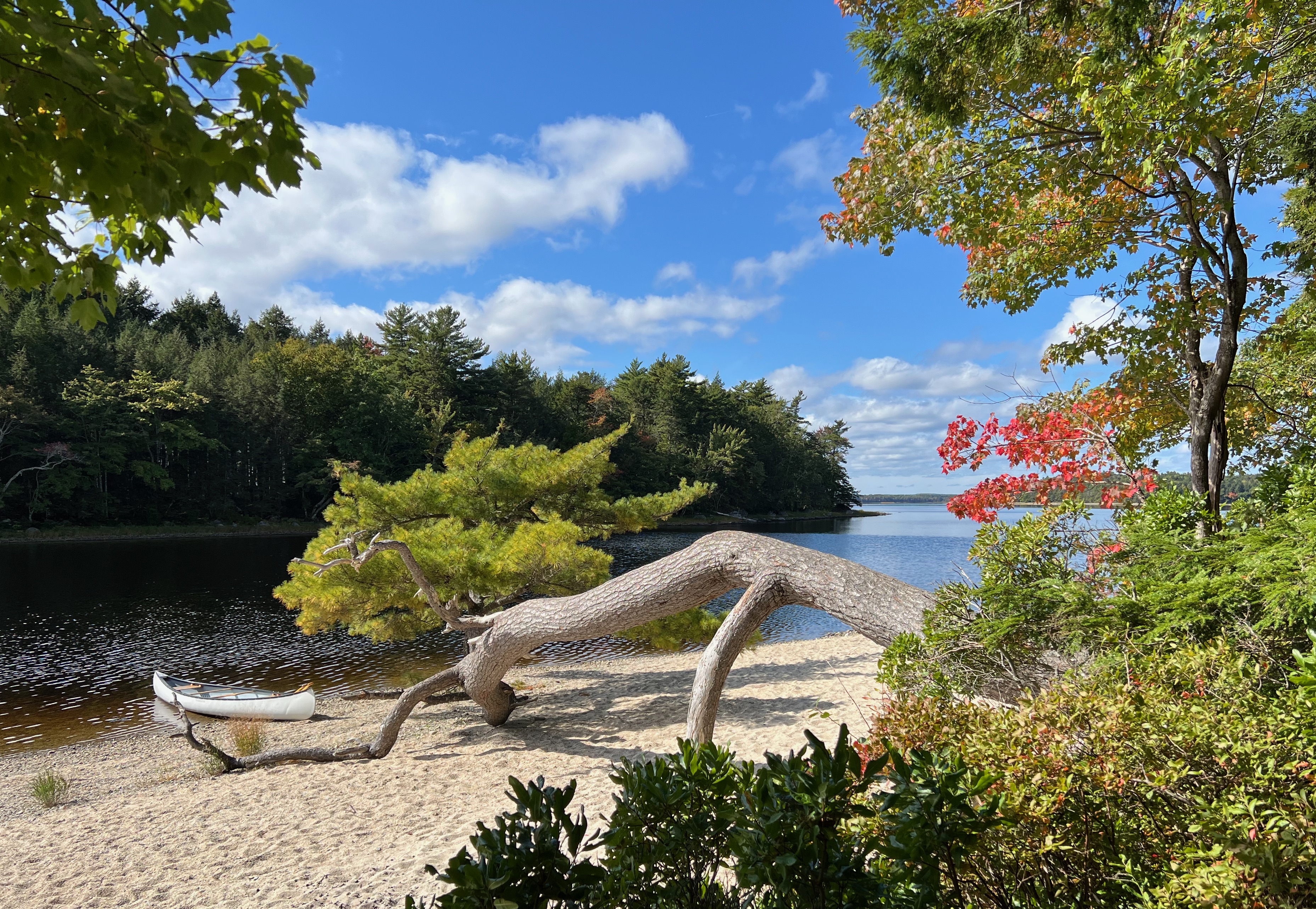
|
Location: Site 15, Kejimkujik National Park & National Historic Site |
We left home 30 minutes later than planned. All was well despite an accident on Hwy 103 that detoured us onto Exit 7 through Chester then back to the 103 via Exit 9. We checked in at the Visitor Centre and when heading down to Jake's Landing I remembered we did not pack the eyepieces. Consequently, we left the telescope gear and the Messier Catalogue forms I had brought in the car. What a letdown! A binocular observing trip it will be - back to basic astronomy and getting visually reacquainted with the dark skies.
|
The upside? It was the amazing sunny day, only a few clouds scattered across the immense blue sky, and no wind. The only waves were those created by our canoe and paddles. We had experienced this only once before - 2 years ago with the Chapmans. It also meant some beach time, leisurely reading and just enjoying nature. A couple from the UK was having lunch on the beach when we arrived around 1:30 PM. Had a nice chat with them while we enjoyed our lunch. Set up camp and enjoyed some time on the waterfront. I napped in the warm tent before dinner. |
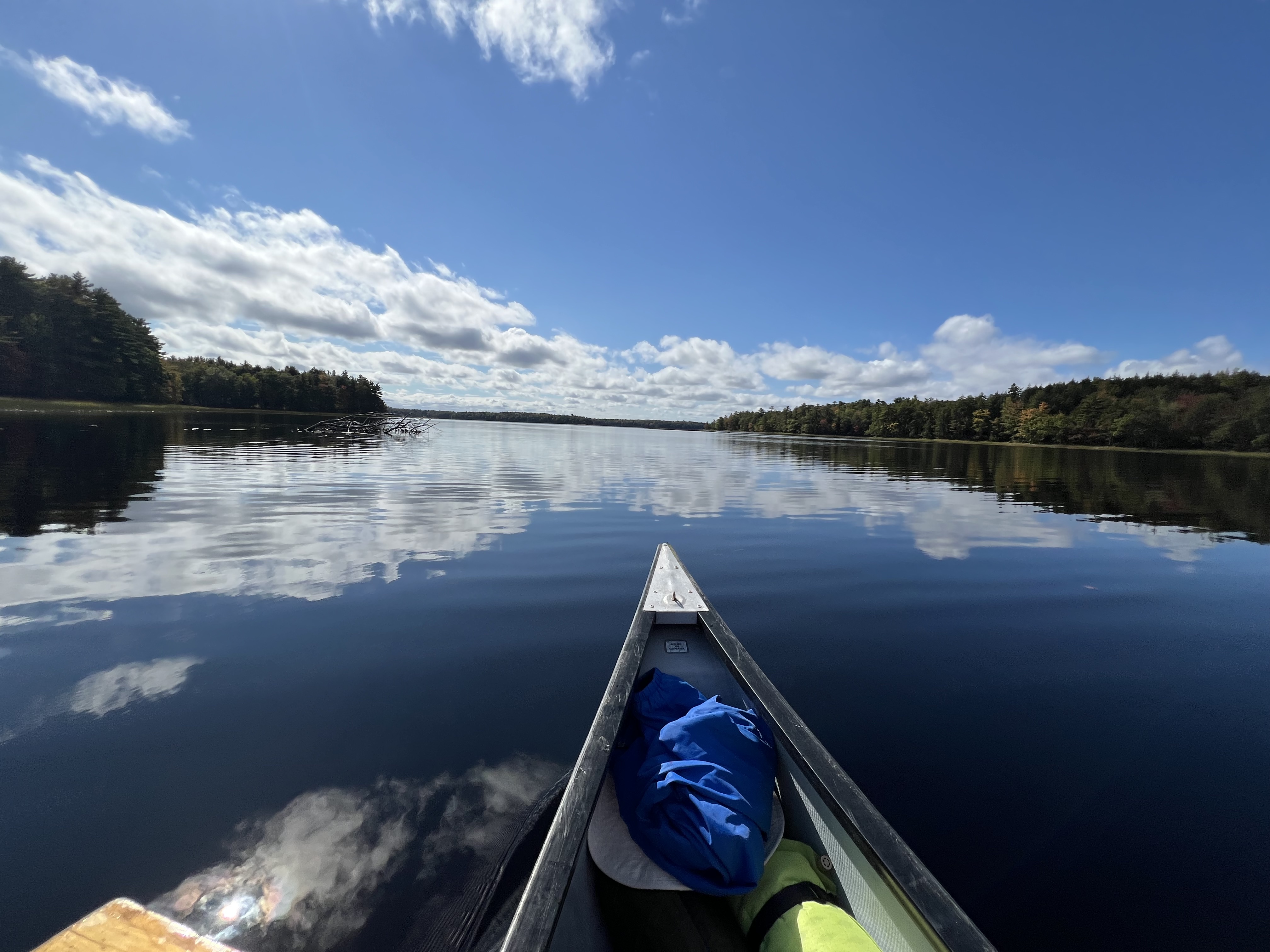
|
Wildlife in the area kept us entertained throughout the day.
- Six Mergansers entered our island's bay in mid-afternoon, swam past us then turned to head to the opposite side of Minard Island.
- Four Common Loons swam past; the lead Loon repeated a single "peep" at regular intervals; they did not, however, honour us with their long mournful calls then nor during the night.
- At least two Fox Sparrows zoomed across the forest floor looking for edibles. Only once did I see one fly up to a tree branch.
- Three Red Squirrels! Perhaps youngsters. We laughed as they raced across our site. One very cautiously approached us in spurts to realize within 6' of us it wasn't a good idea to do so. Hilarious watching two or all three chase each other all over the campsite, and then call out seemingly angrily at each there from different vantage points. They did not make for a totally quiet campsite.
It was an evening of intermittent cloud. We knew that would happen so determined this was to be an evening sitting by the fire. Dinner was planned accordingly - hotdogs roasted on the fire! So good! A glass of wine to enjoy with our meal.
Out on the beach afterwards, we did enjoy clear skies a couple of times. I was very tired, a little frustrated at my forgetfulness (having left the eyepieces at home) and generally was not enthusiastic about being under the stars - despite the beauty above us. I did not note times nor did I sketch.
One of my astronomy goals for the trip (besides the Messier objects) was to locate and sketch the stars in Corona Australis. Unfortunately, the clouds only allowed me to see a few stars in its curve and the horizon was a bit murky. Even the dimmer Kaus Media in the Teapot could not be seen, despite all the others being not so bright but perfectly identifiable. What I did find was M22 using binoculars; Kaus Borealis, the adjacent 3-star Y-shape and M22 itself easily filled my binocular FOV.
Capricornus was high, front and centre in the southern skies. With binoculars, could easily find and identify Deneb Alegiedi on its upper east side. The visual double of Prima Giedi (α1 Capricorni) and the brighter Secondi Giedi (α2 Capricorni) was found in the west side with binoculars. Other stars forming what I refer to as the clown's smile were readily identified as well.
Three stars (Deneb in Cygnus, Altair in Aquila and Vega in Lyra) comprising the asterism DAVe were visible earlier in the evening; consequently, it was easier later in the evening to find the 5 stars of Delphinus and the 4 stars of Sagitta. Jerry found the Coathanger asterism so I followed suit.
Ophiuchus was high above Minard Island, its arced base very evident. M9 had alluded me at SCO in September so I attempted to find it here with Sabik (η Ophiuchi) in Ophiuchus and ξ Serpentis in Serpens Cauda easily seen. I think I found a small grey fuzzy when triangulating from these two stars with binoculars - but not certain.
By the time I turned to look northward, only the three/four Big Dipper stars were visible above our island's tree line. The double Mizar and Alcor were readily found with binoculars.
Facing south again, a bright entity caught our eyes - Saturn. Could make out a slight elliptical shape in the binoculars. In SkySafariPro, I noted that it was in Aquarius and confirmed the shape of the part of the constellation in which it was located but did not take time to note the star names. Nearby was Fomalhaut and I recognized its fellow stars comprising Pisces Austrinus. Above and a bit more east above the tree line came the tail stars of Cetus; our island's trees hid Mira and the constellation's structure above it.
Tiredness had set in so after a brief period in front of the fire with Jerry, I called it a night at 10:30 PM. He stayed up a bit later to monitor his time lapse session.
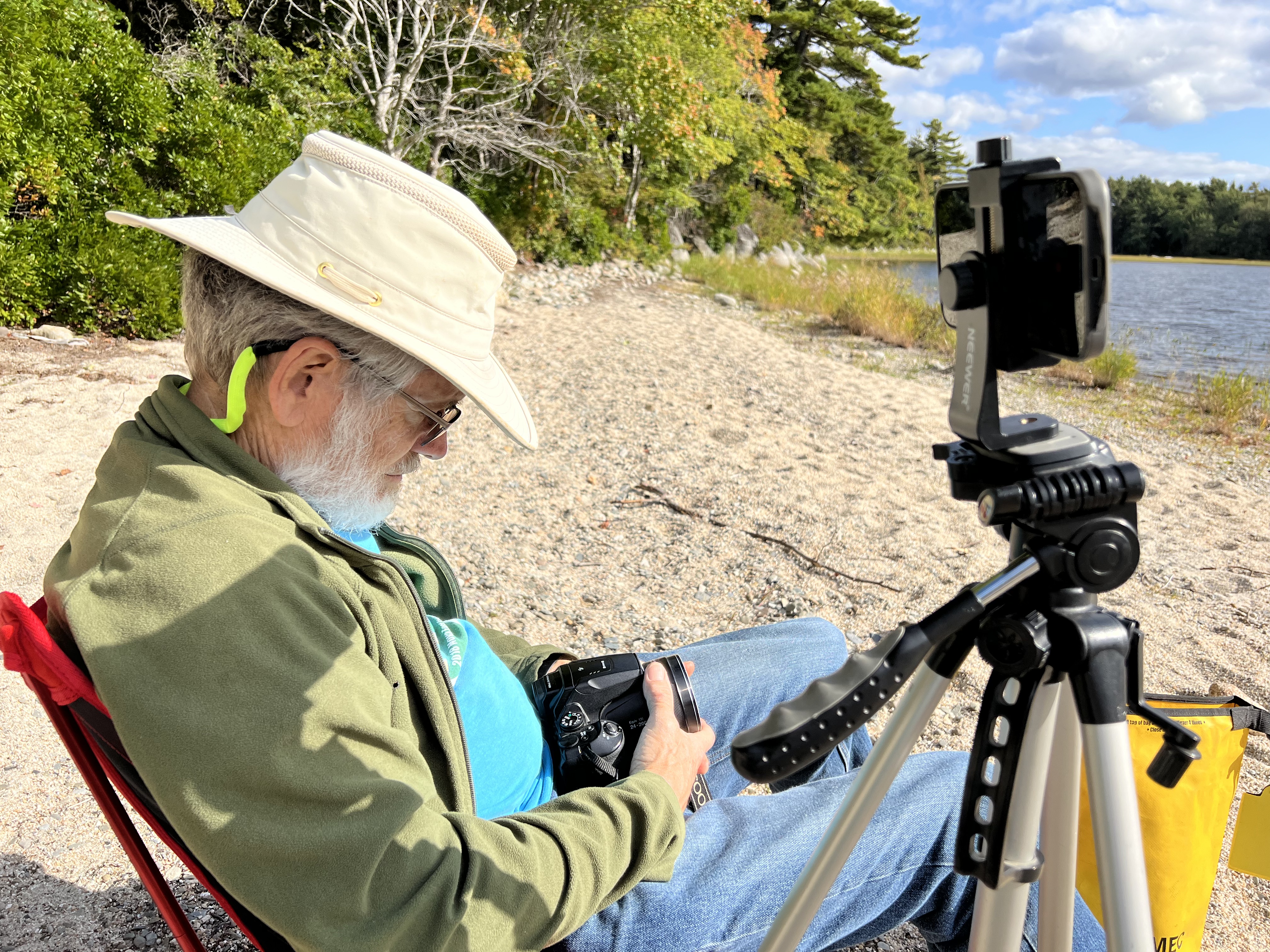
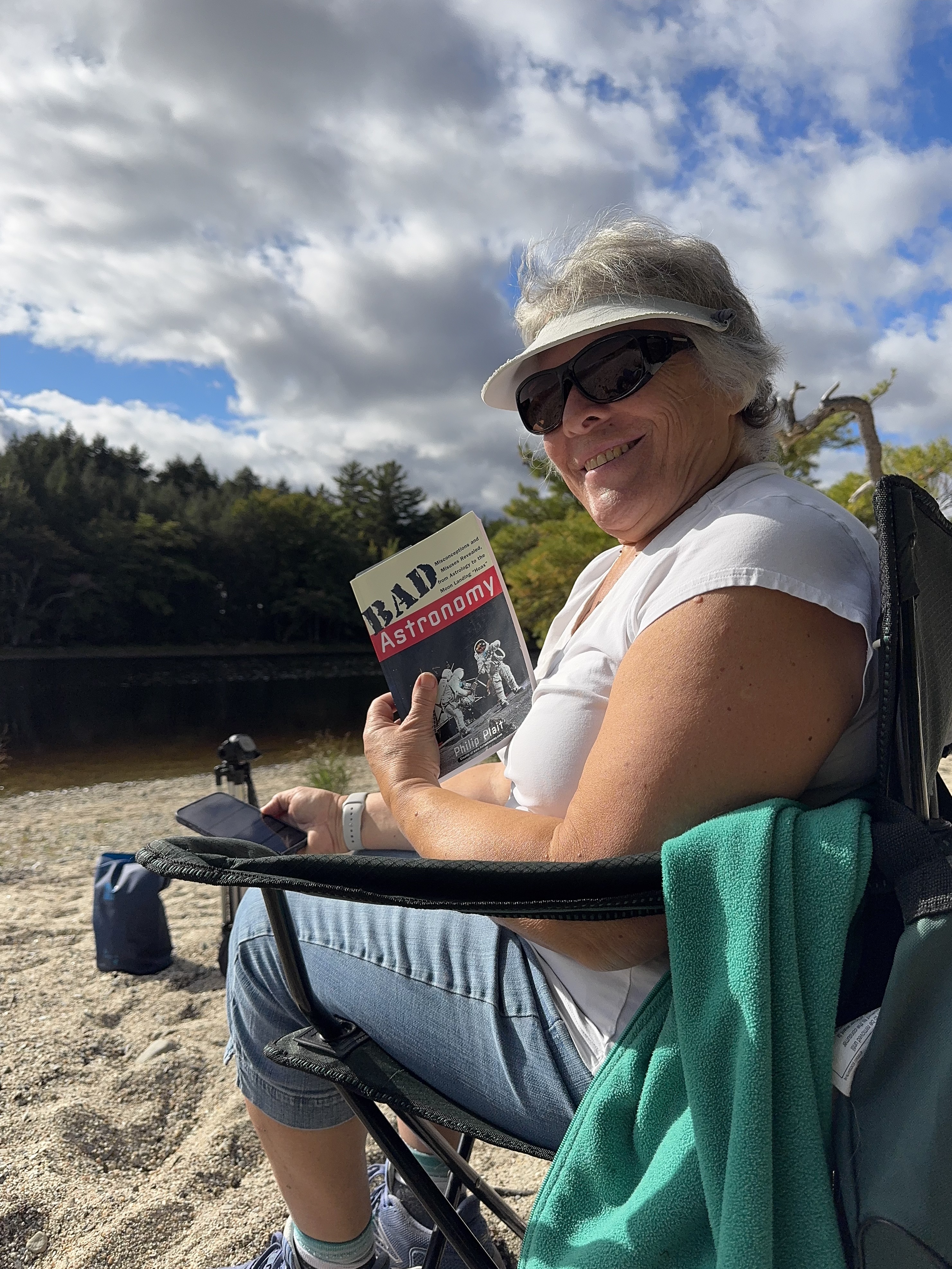
|
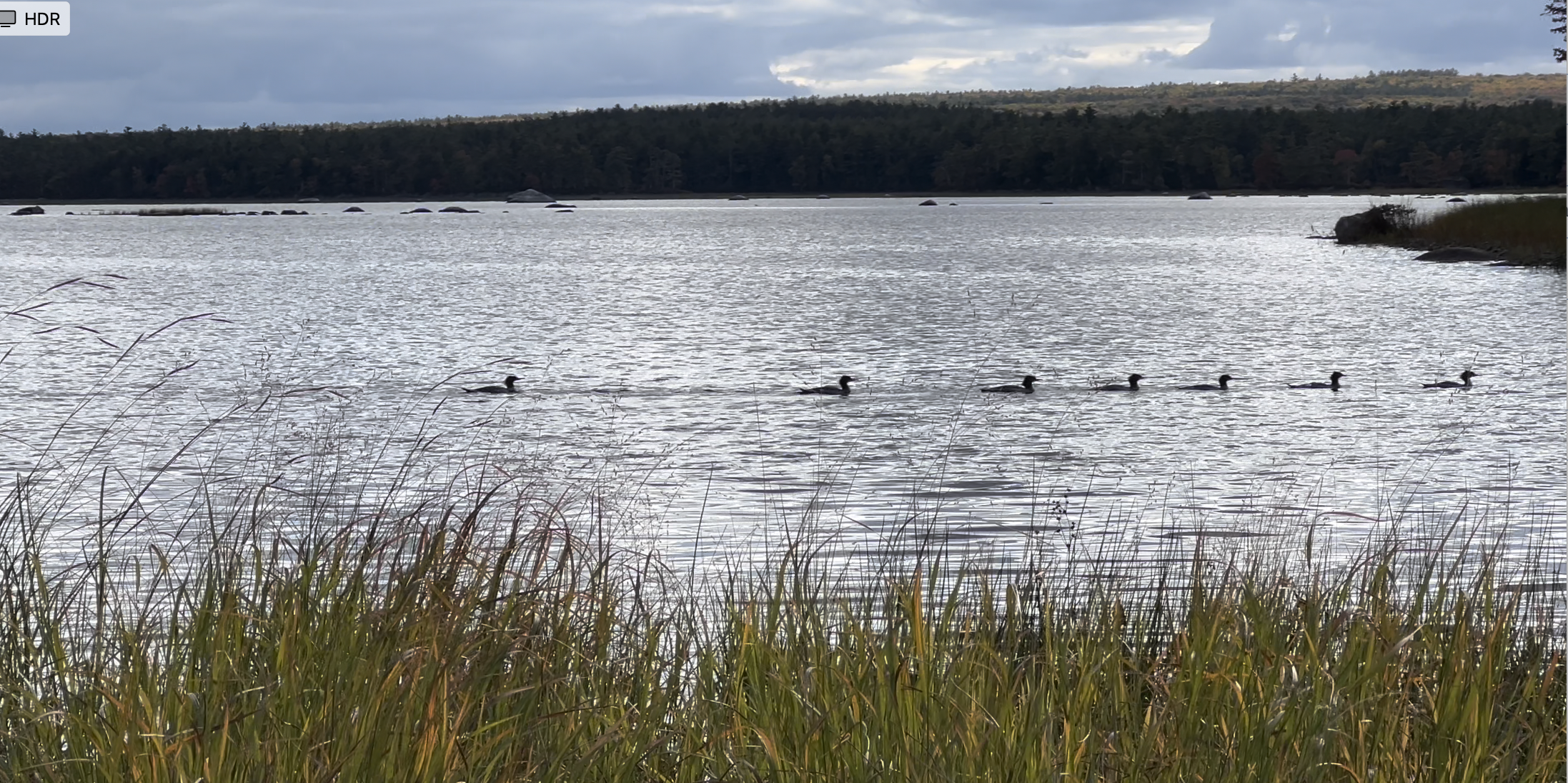
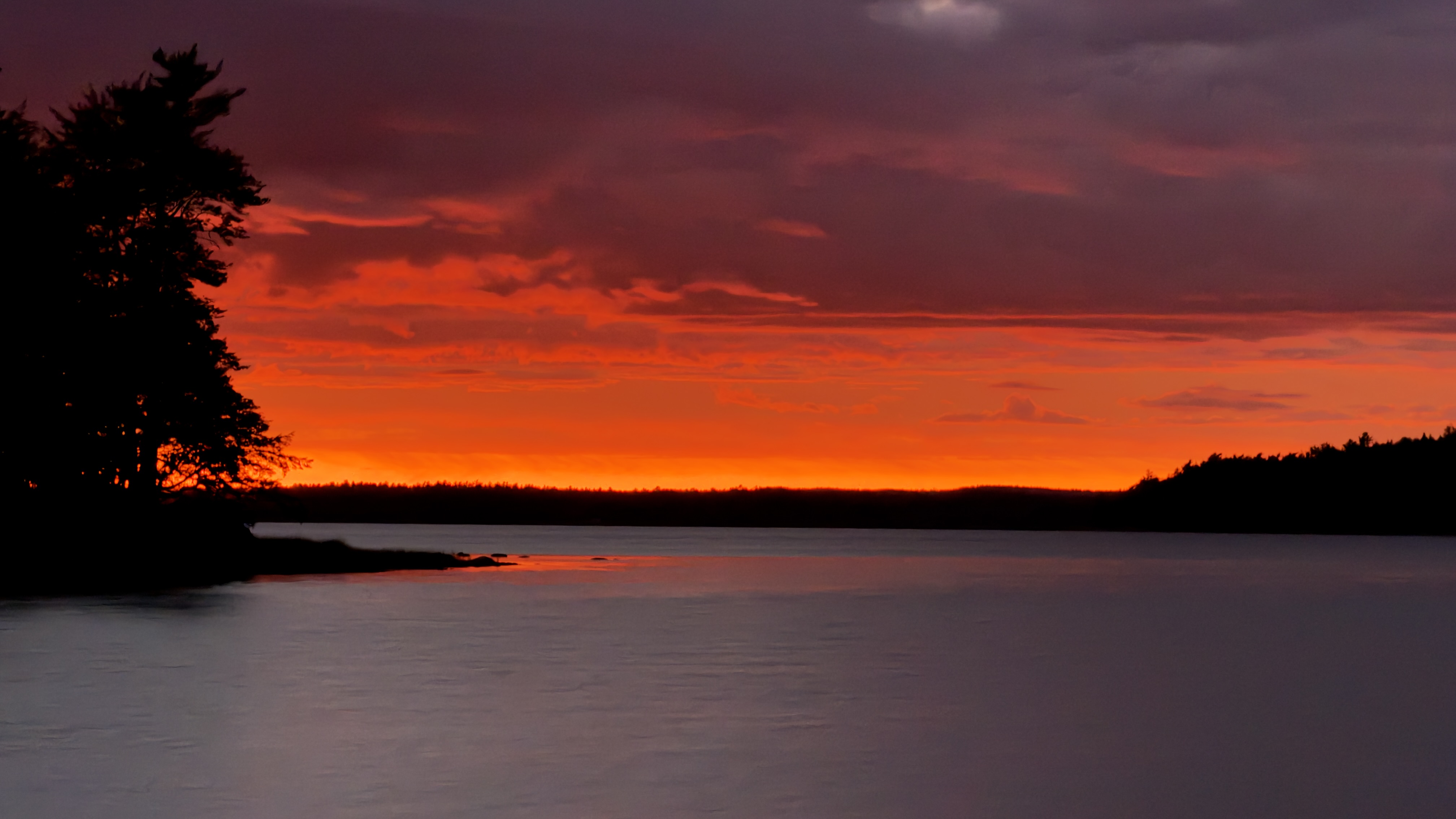
|
Woke up to a clear sky, no wind, and a mirror-like lake for the second day. Clouds to the southeast of us. For details of our second day at the site, refer to General Session - October 3-4, 2024 (Site 15, Kejimkujik National Park).